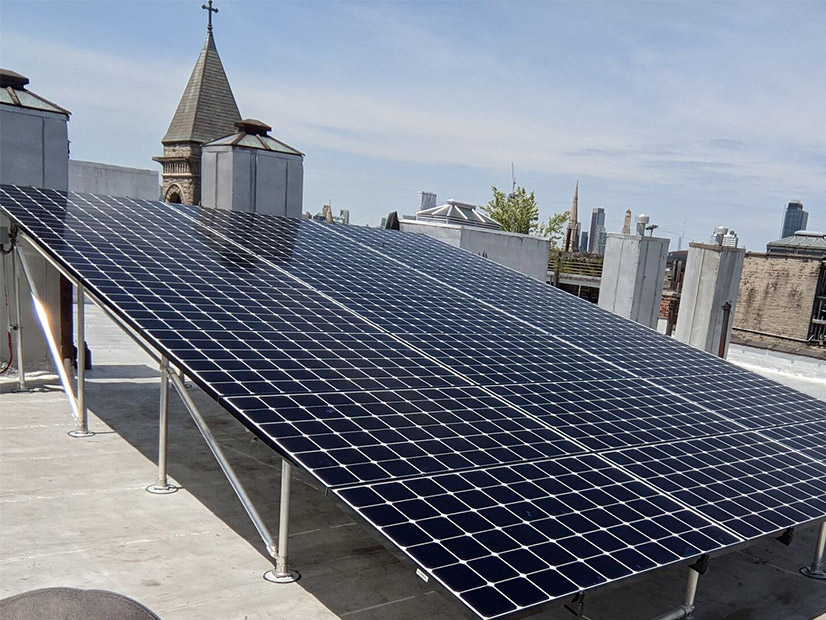A bill that would expand access to community distributed solar generation in New York awaits Gov. Andrew Cuomo’s signature.
The New York State Assembly passed the Community Solar for Disadvantaged Communities Act (A.3805-A/S.3521-A) 112-36 last week after Senate passage (46-16) in April.
“Community solar has emerged as a key avenue for New Yorkers to subscribe to cleaner and cheaper electricity generation, but until now downstate customers were barred from connecting to upstate solar projects by a regulation that prevented the transfer of bill credits across utility territories,” Shyam Mehta, executive director of New York Solar Energy Industries Association (NYSEIA), said in a statement.
The association says that without a policy change, community solar projects in New York City will fall short of the scale needed to serve a significant portion of the region’s residents.
Urban area siting constraints, combined with a requirement that customers and projects be in the same utility territory, have limited the benefits of community solar for city residents, according to a NYSEIA report released in April.
Further complicating the state’s community solar market is an inversion in the rate of projects to major population centers.
Upstate and western New York have 92% of the operating and pipeline project capacity and 42% of the population, according to the report. New York City and Westchester County just north of the city have 8% of the operating and pipeline capacity and 57% of the population. The average project capacity in the city also is much smaller than other areas of the state, the report said.
The bill would address those market issues by authorizing development of a tariff that allows bill credits associated with a community solar project in one utility’s territory to transfer to participating subscribers in another territory. It would also encourage community solar project development within New York City and authorize regulators to review compensation mechanisms for those projects to ensure the market reaches its potential.
Another goal of the bill is to ensure the benefits of community solar are directed to low-income communities in support of the environmental justice requirements of the Climate Leadership and Community Protection Act.
New York City, according to the report, has 55% of the state’s very low-income households, and they are not accessing community solar benefits at an equitable rate.
The bill would direct community solar project developers to designate which of their facilities are participating under the community solar tariff and provide 35% of the benefits from participating facilities to disadvantaged communities.
“For years, community solar has been unable to reach its full potential in New York because customers were unable to subscribe to projects outside of their utility territory,” David Gahl, senior director of state policy for the east at the Solar Energy Industries Association, said in a statement. “These rules unfairly affected New Yorkers living in heavily populated areas who arguably stand to gain the most from low-cost community solar.”
Utilities would have 90 days to develop a model tariff for cross-utility crediting after the act’s effective date. Following a public comment period, regulators would have nine months to approve final utility tariffs.


